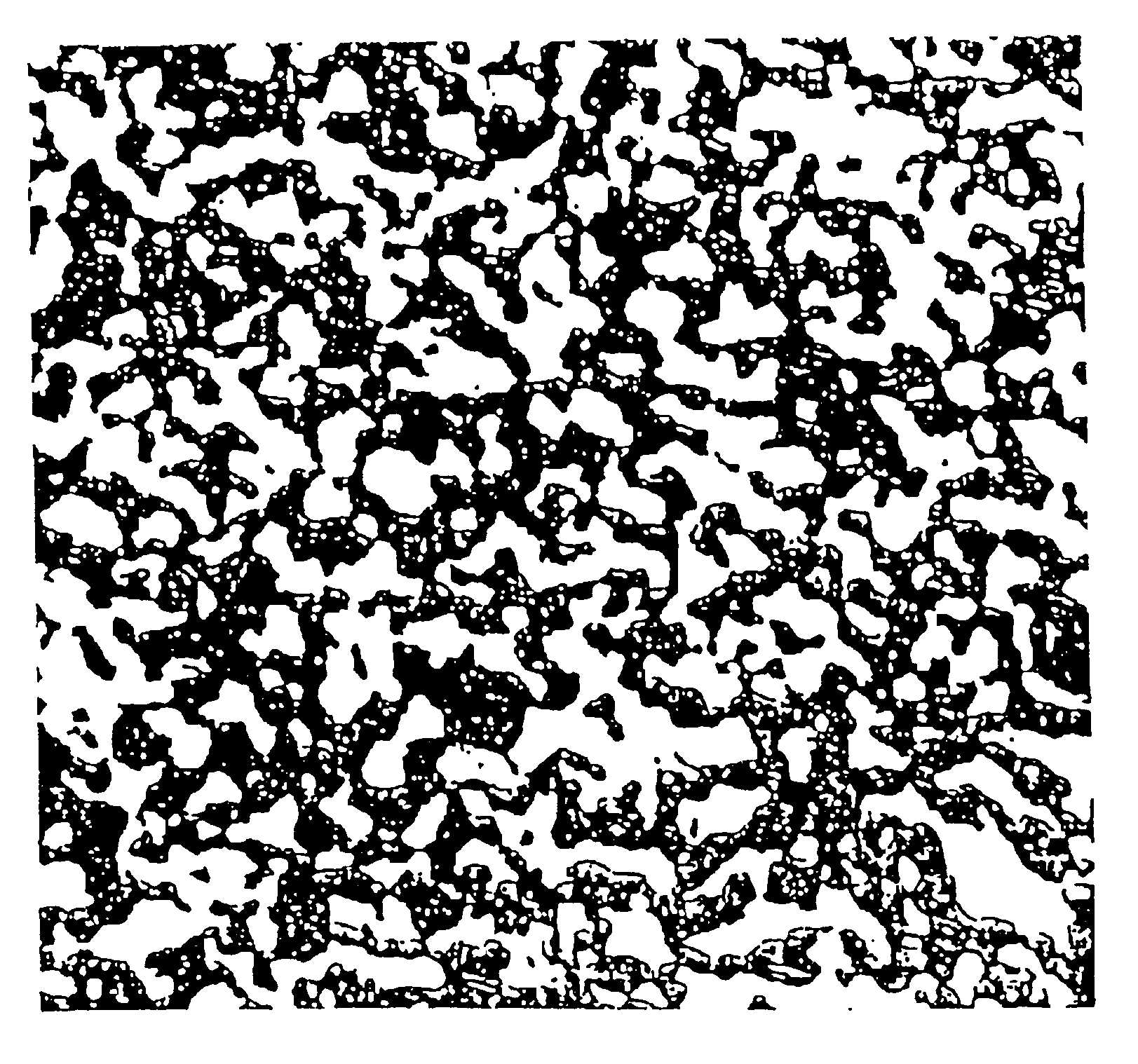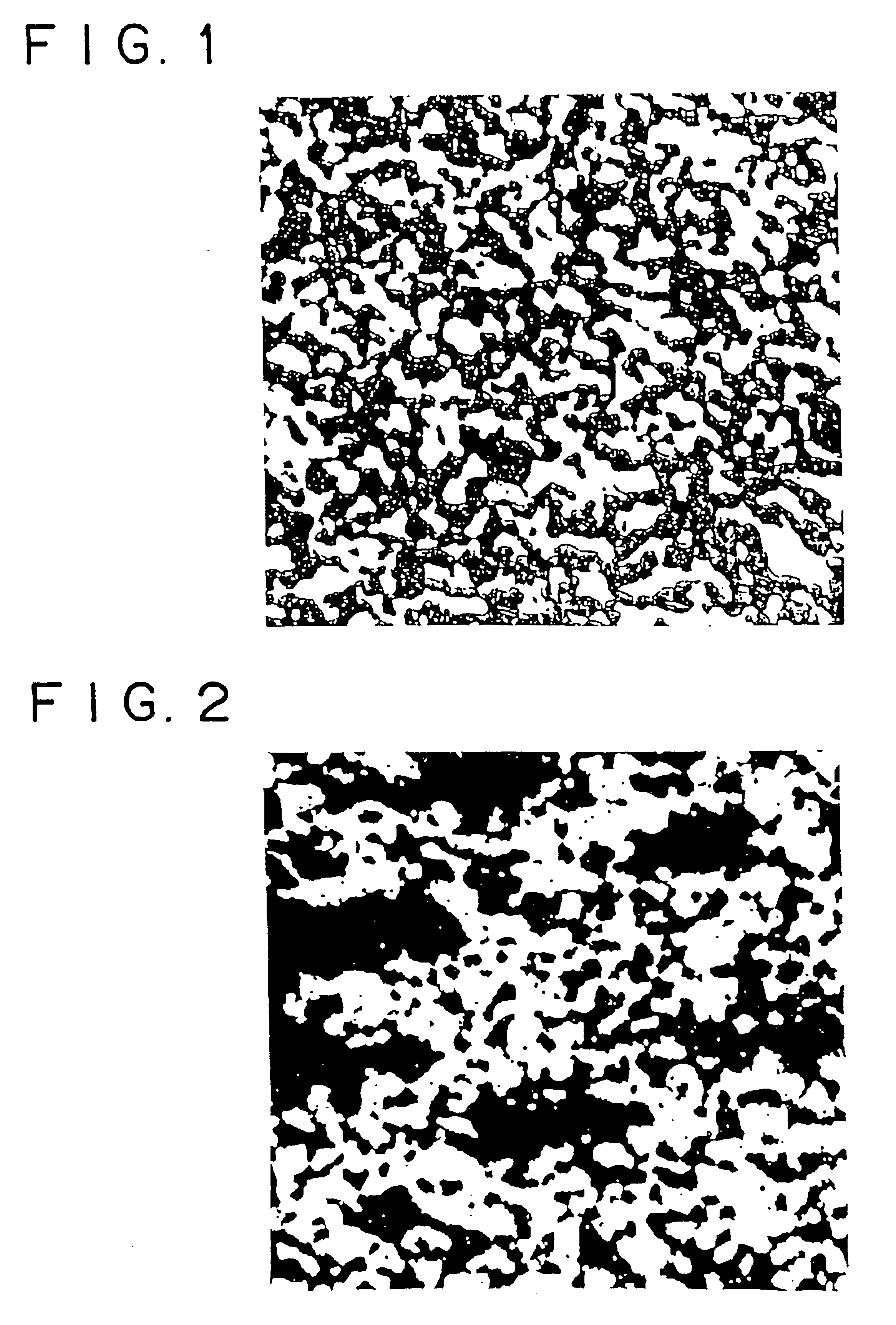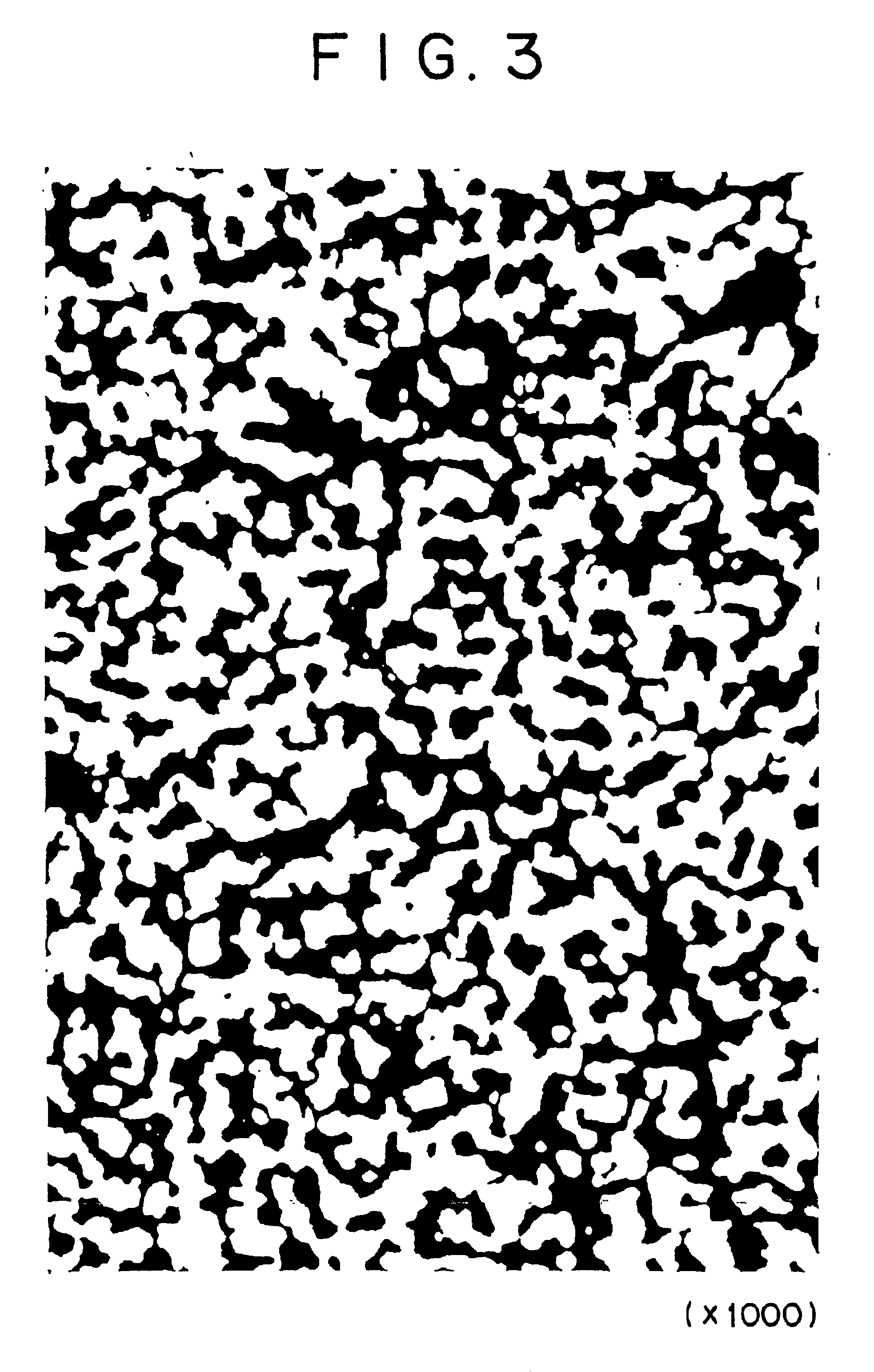Composite material including copper and cuprous oxide and application thereof
a technology of copper and cuprous oxide, applied in the field of composite materials, can solve the problems of increasing heat evolution, not suitable for the radiator of power semiconductor devices, copper does not solder well with silicon, etc., and achieves the effects of less coagulation of powder particles, and large particle diameter
- Summary
- Abstract
- Description
- Claims
- Application Information
AI Technical Summary
Benefits of technology
Problems solved by technology
Method used
Image
Examples
example 1
[0066]Raw material powders used in this example are electrolytic copper powder (with a particle diameter of 75 μm or less) and Cu2O powder (with a particle diameter of 1-2 μm and a purity of 3N). They were mixed in a ratio shown in Table 1. The resulting mixture (1400 g) was thoroughly mixed for more than 10 hours in a dry pot mill containing steel balls. The resulting mixed powder was placed in a mold, 150 mm in diameter, and cold-pressed under a pressure of 400-1000 kg / cm2 depending on the Cu2O content. Thus, there were obtained preforms measuring 150 mm in diameter and 17-19 mm in height. The preforms were sintered in an argon atmosphere. The resulting sintered bodies were chemically analyzed, examined for structure, and measured for thermal expansivity, thermal conductivity, and Vickers hardness. Incidentally, sintering was carried out for 3 hours at 900-1000° C. depending on the Cu2O content. The thermal expansivity was measured in the range of room temperature to 300° C. by us...
example 2
[0072]The same procedure as in Example 1 was repeated except that mixing was carried out by using a V-mixer. There was obtained a sintered body composed of Cu and 55 volt of Cu2O. This sintered body was examined for microstructure, thermal expansivity, and thermal conductivity in the same way as in Example 1.
[0073]FIG. 2 is a photomicrograph (×300) of the sintered body composed of Cu and 55 volt of Cu2O. It is apparent from the photomicrograph that the microstructure contains Cu2O particles greatly varying in size. Large Cu2O particles are formed by coagulation during mixing in the V-mixer. The sintered body in this example is almost comparable in thermal expansivity and thermal conductivity to that of the same composition in which the Cu2O phase is uniformly dispersed in the Cu phase. However, the measured values vary from one position to another. It is noted that Cu2O particles are dispersed mostly in an irregular pattern as in FIG. 1, but they are in larger aggregates than those ...
example 3
[0074]Raw material powders used in this example are electrolytic copper powder (with a particle diameter of 74 μm or less) and CuO powder (with a particle diameter of 1-2 μm and a purity of 3N). They were mixed to establish a composition of Cu and 22.4 volt of CuO. The resulting mixture (300 g) was thoroughly mixed by mechanical alloying for 25 hours in a planetary ball mill (120 mm in diameter) containing steel balls (8 mm in diameter). The resulting mixed powder was placed in a mold, 80 mm in diameter, and cold-pressed under a pressure of 1000 kg / cm2. Thus, there was obtained a preform. The preform was sintered in an argon atmosphere at 800° C. for 2 hours. The resulting sintered body was examined for structure, thermal expansivity, and thermal conductivity in the same way as in Example 1. It was also tested by X-ray diffractometry.
[0075]FIG. 3 is a photomicrograph (×1000) of the microstructure of the sintered body. It is apparent from the photomicrograph that Cu2O particles are f...
PUM
| Property | Measurement | Unit |
|---|---|---|
| Temperature | aaaaa | aaaaa |
| Fraction | aaaaa | aaaaa |
| Thermal conductivity | aaaaa | aaaaa |
Abstract
Description
Claims
Application Information
 Login to View More
Login to View More - R&D
- Intellectual Property
- Life Sciences
- Materials
- Tech Scout
- Unparalleled Data Quality
- Higher Quality Content
- 60% Fewer Hallucinations
Browse by: Latest US Patents, China's latest patents, Technical Efficacy Thesaurus, Application Domain, Technology Topic, Popular Technical Reports.
© 2025 PatSnap. All rights reserved.Legal|Privacy policy|Modern Slavery Act Transparency Statement|Sitemap|About US| Contact US: help@patsnap.com



